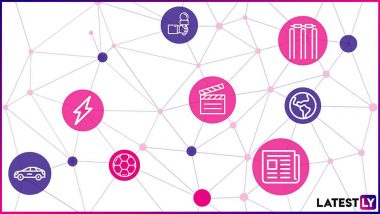New Delhi [India], September 13 (ANI): As the date for the U.S. Federal Reserve's anticipated rate cut draws near (September 18), investors remain cautiously optimistic about its potential effects on various sectors.
According to a report by Motilal Oswal, the healthcare and manufacturing sectors are expected to benefit the most from the Fed's decision to lower interest rates, signaling strong growth prospects in the coming months.
The report highlighted that the healthcare sector will be the fastest-growing vertical over the next 12 to 18 months. Despite being largely agnostic to rate cuts, healthcare is expected to thrive due to its minimal threat of insourcing.
The report suggested that the resilience of healthcare, coupled with the demand for innovations in biotechnology, clinical research, and digital health solutions, positions it as a key beneficiary of the upcoming rate cuts.
"Healthcare will be the fastest growing vertical over the next 12-18 months. The sector is largely agnostic to rate cut tailwinds" said the report.
Another sector, manufacturing, also stands out with high growth potential, particularly due to the technological advancements it could embrace during the rate cut cycle. The report noted that lower interest rates are expected to spur investments in technology, further accelerating the industry's recovery.
Although the sector faces some challenges, such as limited IT services penetration in Europe, the report identifies opportunities in technologies like generative AI (GenAI), digital twins, IoT, and connected factories.
"Manufacturing also shows a strong case for recovery; a rate cut cycle to spur investments in technology, and the threat of insourcing here remains fairly low" the report added.
However, the report also pointed to challenges in the banking, financial services, and insurance (BFS) sector, which faces significant threats from insourcing despite the positive effects of rate cuts. While there is some pre-GenAI spending in BFS, the adoption of GenAI solutions may be slower in this sector due to the complexity of enterprise-wide transformation.
The report said "BFS enjoys positive effects from rate cuts but faces significant challenges due to a severe insourcing threat, limiting its recovery potential".
Retail, on the other hand, is predicted to benefit from rate cuts as increased consumption in client markets, particularly in the U.S., is expected to fuel growth.
The report highlighted that the sector could shift its focus from cost-reduction strategies to revenue-generating initiatives.
Lastly, the hi-tech sector ranks fifth in terms of benefiting from rate cuts, according to the report. While rate cuts may have a moderately positive impact on the sector, the threat of insourcing remains high. Many software companies are expected to retain tight control over their intellectual property, limiting vendor opportunities.
Overall, the report identifies healthcare and manufacturing as the top sectors poised to benefit from the U.S. Fed's anticipated rate cut, while also highlighting opportunities and challenges in BFS, retail, and hi-tech industries. (ANI)
(This is an unedited and auto-generated story from Syndicated News feed, LatestLY Staff may not have modified or edited the content body)













 Quickly
Quickly















